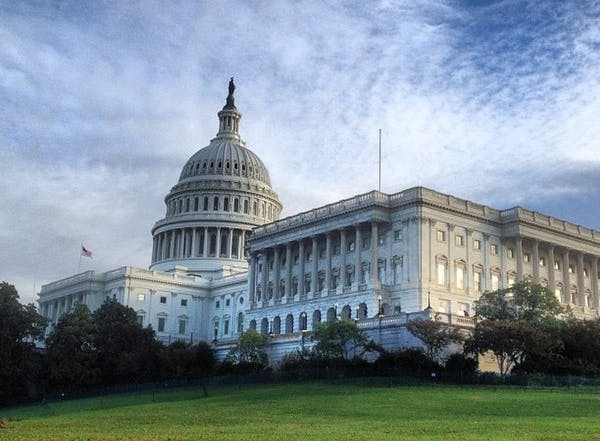As Congress Heads Home for the Holidays, Budget Deadline Looms
Members of Congress will have only eight days to agree to new spending levels after their return next year.

As members of Congress go home for the holidays, Congress is facing yet another high-stakes government funding showdown upon their return in January, with deadlines looming just days after their return.
With both the House and the Senate out for the rest of the year from Wednesday evening, budget negotiations have been punted into the new year, with four spending bills due on January 19 and the other eight due on February 2.
Spending negotiations for the 2024 fiscal year, which began on October 1, date back to the summer, when President Biden and Speaker McCarthy struck a deal that included spending toplines and an increase of the debt ceiling.
Though Speaker Johnson has said he would honor the agreement struck between Mr. Biden and Mr. McCarthy and pass spending bills at the levels negotiated in the debt ceiling deal, senators from both parties have pushed for the inclusion of spending from a “side deal” as well as emergency spending.
“It continues to be my intention that the House and Senate complete action on full-year bills ahead of the January 19 and February 2 deadlines provided for in the last continuing resolution,” Mr. Johnson wrote in a letter to members. “I do not intend to have the House consider any further short-term extensions.”
Simultaneously, House Republicans on the Appropriations Committee have pushed for spending levels around $100 billion short of the agreed-upon spending levels.
According to the Treasury Department, the national debt increased by about $7.8 trillion during the four years President Trump was in office and by about $6 trillion since Mr. Biden took office.
The current national debt stands at about $33.8 trillion with $26.8 trillion held by the public and $7 trillion held by other governments.
Congressman Bill Huizenga and Congressman Scott Peters, who are a Republican and a Democrat, respectively, are cosponsoring a bill that would establish a bipartisan and bicameral debt commission to come up with policy to address the national debt.
In response to the spending impasse, Mr. Johnson has offered to fund the government through the end of this fiscal year with a continuing resolution, a proposal which has been rejected by both Republicans and Democrats.
With just ten days between Congress’s scheduled return to Washington D.C. and the first government funding deadlines, lawmakers will have to compress into days negotiations that typically take weeks in a more functional Congress.
One traditional solution to the time crunch, a continuing resolution, could have serious consequences as well. Aside from adamant opposition to a continuing resolution from many congressional Republicans, any continuing resolution that pushes past April 30 would include automatic budget cuts as well.
The chairwoman of the Senate Appropriations Committee, Senator Murray, expressed opposition to a year-long continuing resolution after the speaker offered one earlier this year.
“The Speaker’s proposal would lock in outdated spending plans and devastating across-the-board cuts while locking all of us out of any kind of thoughtful decision-making process for our nation’s future — all of which should be unacceptable to everyone here,” Ms. Murray said.
According to Ms. Murray’s office, such a continuing resolution would mean somewhere between a 3 and 4.1 percent cut to defense spending and a 9.4 percent cut to non-defense domestic programs under the debt ceiling agreement levels.
The top Republican on the Senate Appropriations Committee, Susan Collins, also expressed her opposition to allowing the automatic spending cuts to happen. “A year-long continuing resolution would simply fail to provide the resources needed to protect our nation,” Ms. Collins said.
Though some House Republicans have expressed hope that the threat of automatic spending cuts could push Senate negotiators to meet them at a lower spending level, negotiators in both houses of Congress are currently dug in at their preferred spending levels, and they’ll have just eight legislative days to come to an agreement in the new year.

